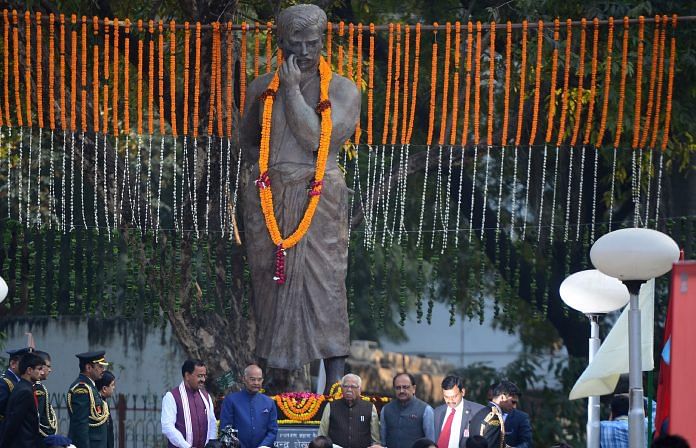
Monday marks the 112th birth anniversary of the freedom fighter synonymous with the Kakori train robbery shown in Rang De Basanti.
New Delhi: Born in 1906, Monday marks the 112th birth anniversary of revolutionary freedom fighter Chandra Shekhar Azad. The imposing image of Azad, clad in a white vest and a hand twirling his moustache, symbolising courage and patriotism will forever be etched in the memory of every Indian.
An important part of the Indian freedom struggle, Azad was part of the quartet of revolutionaries along with Bhagat Singh, Sukhdev and Rajguru.
Azad was born as Chandra Shekhar Tiwari in Bhavra village of present-day Alirajpur district in Madhya Pradesh. He grew up with the children of Bhil tribe in his village and enjoyed participating in sports. Naturally athletic and physically fit, he was an ace archer and javelin thrower.
He was sent to the Kashi Vidhyapeeth in Varanasi to study Sanskrit, which is where he was introduced to the nationalist movement. In 1921, at the age of 15, he joined the Non-cooperation Movement.
‘Azad’ and HRA
Chandra Shekhar Tiwari got his name ‘Azad’ when on his arrest, a magistrate asked him his name, to which he responded by calling himself Azad, the son of a free India. The agitated magistrate awarded him a sentence of 15 whiplashes but the incident made him popular among freedom fighters.
The Jallianwalla Bagh massacre of 1919 had deeply affected him and was one of the reasons for his joining the Indian freedom struggle. In 1922, when the Non-cooperation Movement was suspended by Mahatma Gandhi, an angry Azad came in contact with Ram Prasad Bismil, the founder of the Hindustan Republic Association (HRA).
Azad and other members of the HRA funded themselves by looting government property. They were also handed donations by wealthy members of the Indian National Congress.
In 1925, Azad along with Bismil and others planned to loot a government train carrying money from Shahjahanpur to Lucknow. They were to target it at Kakori, near Lucknow, but the incident had major implications for the organisation. Many of its members, including Bismil, were arrested by the British. The Kakori train robbery was brought to screen by Aamir Khan in Rang De Basanti.
Azad though managed to escape and survived in the Orchha forest of Varanasi. He began training new recruits in using guns.
Between 1925 and 1928, Azad was involved in a number of incidents, including an attempt to blow up the Viceroy of India and the shooting of British officer J.P. Saunders.
The HSRA
Azad and Bhagat Singh reorganised the HRA in 1928, renaming it as the Hindustan Socialist Republic Association (HSRA).
His activities lasted another three years before the British caught up with him. In 1931, Azad died at the Alfred Park of Allahabad. An informant had alerted the colonial authorities of Azad’s presence in the area. Although he put up a brave fight, he was injured in the shootout. Azad shot himself, after having pledged to never get caught by the British.
The pistol he used is displayed in the Allahabad Museum. His idea of nationalism may not have matched with that of Mahatma Gandhi but his death was a huge loss to the Indian freedom struggle.
He is still remembered as one of the courageous Indian freedom fighters. Prime Minister Narendra Modi also tweeted on the occasion of his 112th birth anniversary.
On his birth anniversary, my tributes to the great Chandra Shekhar Azad. A brave son of Bharat Mata, he sacrificed himself so that his fellow citizens get freedom from colonialism. Generations of Indians are inspired by his courage.
— Narendra Modi (@narendramodi) July 23, 2018

COMMENTS